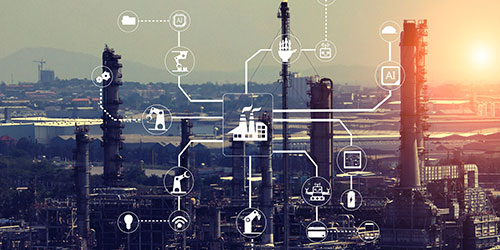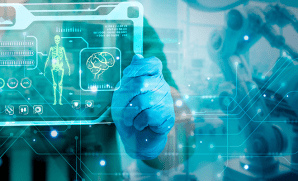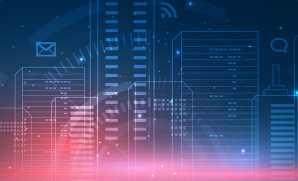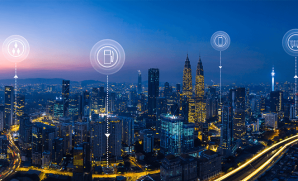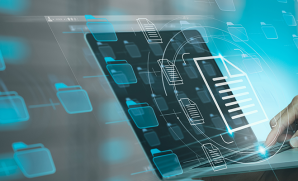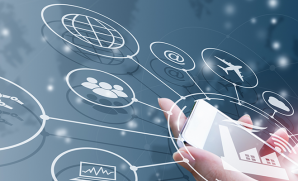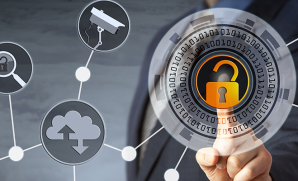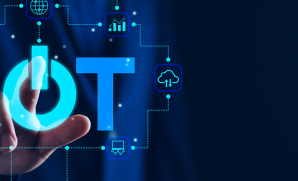Revolutionizing Patient Care: Smart Healthcare with the Internet of Medical Things
Publish Date: June 20, 2022The healthcare industry is heading toward a massive workforce shortage. A BMC study predicts that by 2030, the world will be short of 15 million healthcare workers!
If so, it is worth finding out how technology can help healthcare facilities. Smart healthcare brings efficiency to the global healthcare industry with the Internet of Medical Things (IoMT). This is by far one of the most disruptive technologies on earth today. It is already revolutionizing how we practice global healthcare and lowering costs while improving efficiencies.
This IoT in healthcare is not a new phenomenon and has been given several labels—digital health, connected healthcare, and telemedicine are just a few. IoT solutions for healthcare can range from consumer-oriented mHealth apps to sophisticated system-wide clinical devices. Let’s explore how this impacts the industry and what ground-breaking possibilities it holds for the future.
IoT with the Medical Differentiator
The Internet of Medical Things (IoMT) can be defined as a kind of IoT service set up with the help of advanced healthcare and medical devices. It is a network of medical devices connected across the internet, software applications, and necessary hardware infrastructure. These are all utilized for interconnecting healthcare information technology (IT) in a broader but pragmatic way.
Unlike the IoT itself, the IoMT is an amalgamation of devices within the medical technology and public healthcare industries that have unique features in terms of both design and usage. In design terms, the IoMT must be more flexible, using dynamic wireless networks bypassing the traditional rigidities of client-server architecture and wired Ethernet frameworks. In utility terms, the IoMT must be more focused on the users providing maximum usability and convenience. Some major IoMT devices are personal wearable gadgets (smart fitness bands, wearable blood pressure measurement devices, etc.), in-home medical instruments (dialysis and infusion machinery, etc.), in-hospital devices (patient monitors, anesthesia machines, etc.), ingestible cameras and Personal Emergency Response Systems (PERS), and Real-Time Patient Monitoring (RTPM) systems.
Major opportunities with IoMT
The main difference between IoT and IoMT is that the latter is more dedicated to healthcare services than the former. An IoMT infrastructure is equipped for exact diagnosis, providing perfect medical attendance, and bringing down the overall medical costs. With the help of Android/smartphone applications, this technology makes the patients capable of sending their health information to the nurses and doctors for appropriately monitoring diseases, thereby detecting and preventing any chronic illness before it is too late.
Research by healthcare experts shows that the capability of heart-beat activity trackers for assessing patients with ischemic heart disease with the help of cardiac-accelerometer and heart-beat rate data has been crucial in the prevention of sudden cardiac events arrests. This is an example of a remote patient monitoring (RPM) system that must be expanded and diversified. Continuous smart monitoring can help increase preventive diagnoses. And integration of the different monitoring devices in real-time would call for infrastructure like the IoMT.
As per Insider Intelligence, by 2025, 70.6 million US patients will use RPM tools
This kind of technology in the realm of healthcare and medical devices improves the patient experience by diminishing the requirement for in-person medical care and helping to reduce costs. By working in this way, the hospital management and healthcare industry can save about $300 billion annually, principally through superior medication coupled with remote patient guidance and monitoring. Another optimistic impact of IoMT involves drug management and the launch of ‘smart pills’ that would use minute, microscopic sensors. Once swallowed, these smart pills convey data across the various linked devices. Hence, these smart pills can accomplish the functions of endoscopic, chemical, or nano-technological implants enabling monitoring of a patient’s internal health by receiving/sending data wirelessly.
In sum, it has been becoming increasingly clear that in the era of global pandemics and increasing interventions of advanced medical technologies, IoMT may become a healthcare imperative for the future.
In such a state of affairs, the emerging trend of medical networking is also very much dependent on IoMT. While about 60% of modern medical institutions have established IoT frameworks for internal use, all such facilities must be internetworked with the lapse of time. While medical and technological policymakers are poised to achieve such a goal, the expansion of medical networking through the rapid adoption of IoMT is not much far away. It also has the potential to help with advanced telehealth services involving medical transcription, remote guidance during complex surgeries, three-dimensional printing of delicate medical devices, etc.
Furthermore, warehousing healthcare data obtained from remote patient monitoring pathways is another crucial aspect of IoMT facilitation and integration. Since IoT has some inherent advanced security and encryption features, IoMT is well-equipped with many security attributes ranging from access control to data protection. Hence, medical data warehousing within the fold of the IoMT framework would be secure and readily accessible.
IoMT also leverages blockchain, allowing communication among non-trusting members with no mediators. Innovators who can develop blockchain solutions for healthcare providers can create life-changing real-world services. Furthermore, IoMT is also capable of predicting the requirements of patients before they arise. This kind of advanced prognosis coupled with an IT-enabled treatment regime can help augment preventive medication. In the same context, the different medical devices inside the coherent framework of an IoMT-enabled system can also be equipped with artificial intelligence (AI) capabilities. In such circumstances, IoMT appears to be the future of modern medicine and life sciences since it has tremendous potential to bring together different technological assets and methodologies.
The COVID-19 pandemic and beyond
In the aftermath of the COVID-19 pandemic, the medical world faces crucial challenges. Previously, in-person medical care was regarded as unsafe if and only if there were usually isolated instances of handling highly contagious diseases. Though handling patients with infectious diseases was never a big deal for most medical professionals, the coming of coronavirus has changed a whole lot of equations. There are very few means available to stop the spread of COVID-19, and even medical professionals themselves have died while handling the pandemic at its peak. Pandemics like COVID-19 would effectively shift the attention of mainstream medical policymakers from in-person attendance to IoMT systems, architecture, and technologies
Consequently, the importance of telemedicine and remote healthcare services has now increased manifold. With the help of telemedicine, patients with highly infectious diseases or living in home isolation (and following quarantine protocols) can be given continuous medical care and advice without in-person interference and attendance. This increases the chances of survivability of both the medical caregivers and the isolated patients. Moreover, remote patient monitoring services can prove to be immensely helpful in handling co-morbidities during such dire situations.
Hence, in such situations, the patient can be given a wearable device that would continuously monitor the patient’s blood pressure levels. This data would be instantaneously transmitted to the doctors and nurses, who could then remotely observe/monitor the patient continuously and in real-time. This is how the health IT server computer/router will play, facilitating the consistent wireless exchange of medical data regarding patients to be monitored remotely. The primary mission of IoMT is to integrate such wearable devices (meant for blood pressure and blood sugar monitoring, etc.), wireless server computers/routers, and mobile computers available with the medical staff (equipped with IP telephony services) to be put to work together as a whole lot of ‘medical things.’
In a nutshell, technological advancements have made adopting IoMT quite an imperative. Coupled with the necessities that arose due to the lockdown protocols as COVID-19 keeps surging, again and again, IoMT is now gradually becoming a compulsory framework for medical technology, research, and development. Systems like measuring body temperature from a distance have already gained considerable popularity and widespread deployment. The medical world is now poised to coordinate the diverse varieties of advanced healthcare and medical devices. In this scenario, redeveloping IoT into IoMT would help save costs and be rewarding in the long run. Firstly, a repeated resurgence of infectious diseases like Bird Flu, COVID-19, etc., would necessitate more and more remote monitoring coupled with telemedicine. Secondly, the in-person attendance of patients would gradually become obsolete given the associated costs and risks. Thirdly and finally, upgrading the different Web-based medical facilities, apps, and hospital portals would compulsorily involve technological migration from dynamic wireless networks to IoMT-enabled telehealth services.
At YASH, we’re revolutionizing patient care by setting a new standard for digital healthcare. Our IoMT services CoE help redefine and execute digital roadmaps for healthcare providers to ensure the highest levels of patient satisfaction. We help accelerate digital healthcare transformations and align all care processes for qualitative and compliant healthcare service deliveries. Our industry experts, who work across the globe, ensure a seamless transformation to a modern, integrated digital healthcare system. We know how to leverage the latest technologies to provide the best care, making us trusted partners in creating smart healthcare.





